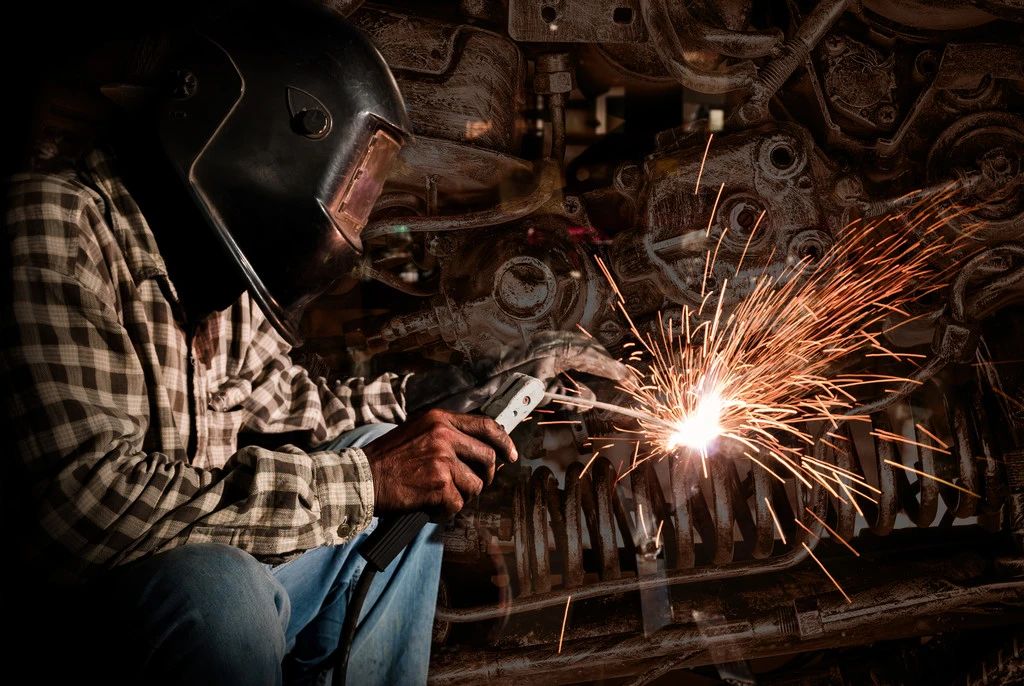1. Turn on the power switch on the front panel and set the power switch to the “ON” position. The power light is on. The fan inside the machine starts to spin.
2. The selection switch is divided into argon arc welding and manual welding.
(2) argon arc welding adjustment
1. Set the switch to the argon welding position.
2. Open the valve of the argon cylinder and adjust the flow meter to the required flow.
3. Turn on the power switch on the panel, the power indicator light is on, and the fan inside the machine is working.
4. Press the handle button of the welding torch, the solenoid valve will work, and argon gas output will start.
5. Select the welding current according to the thickness of the workpiece.
6. Put the tungsten electrode of the welding torch at a distance of 2-4mm from the workpiece, press the button of the welding torch to ignite the arc, and the high-frequency arc-igniting discharge sound in the machine disappears immediately.
7. Pulse selection: the bottom is no pulse, the middle is medium frequency pulse, and the top is low frequency pulse.
8. 2T/4T selection switch: 2T is for ordinary pulse argon arc welding, and 4T is for full-featured welding. Adjust the starting current, current rising time, welding current, base value current, current falling time, crater current and post-gas time according to the required welding process.
The distance between the tungsten electrode of the welding torch and the workpiece is 2-4mm. Press the torch switch, the arc is ignited at this time, release the hand switch, the current rises slowly to the peak current, and normal welding is performed.
After the workpiece is welded, press the hand switch again, the current will slowly drop to the arc closing current, and after the pits of the welding spots are filled, release the hand switch, and the welding machine will stop working.
9. Attenuation time adjustment: the attenuation time can be from 0 to 10 seconds.
10. Post-supply time: Post-supply refers to the time from the stop of the welding arc to the end of the gas supply, and this time can be adjusted from 1 to 10 seconds.
(3)Manual welding adjustment
1. Set the switch to “hand welding”
2. Select the welding current according to the thickness of the workpiece.
3. Thrust current: Under welding conditions, adjust the thrust knob according to the need. The thrust knob is used to adjust the welding performance, especially in the range of small current when used in conjunction with the welding current adjustment knob, which can easily adjust the arcing current without Controlled by the welding current adjustment knob.
In this way, in the welding process of small current, a large thrust can be obtained, so as to achieve the effect of simulating a rotating DC welding machine.
(4)shut down
1. Turn off the main power switch.
2. Disconnect the meter box control button.
Xinfa argon arc welding has excellent quality and strong durability, for details, please check: https://www.xinfatools.com/tig-torches/
(5)Operational matters
1. Maintenance and repair work must be carried out under the condition of completely cutting off the power supply.
2. Since argon arc welding has a large working current passing through it, the user should confirm that the ventilation is not covered or blocked, and the distance between the welding machine and surrounding objects is not less than 0.3 meters. Keeping good ventilation in this way is very important for the welding machine to work better and ensure a longer service life.
3. Overload is prohibited: the user should observe the maximum allowable load current at any time, and keep the welding current not exceeding the maximum allowable load current.
4. Prohibition of excessive voltage: Under normal circumstances, the automatic voltage compensation circuit in the welder will ensure that the current of the welder remains within the allowable range. If the voltage exceeds the allowable range, the welder will be damaged.
5. Regularly check the connection of the internal circuit of the welding machine to confirm that the circuit is connected correctly and the joint is firm. If found rusty and loose. Use sandpaper to remove the rust layer or oxide film, reconnect and tighten.
6. When the machine is powered on, do not let your hands, hair and tools get close to the live parts inside the machine. (such as fans) to avoid injury or damage to the machine.
7. Regularly blow off the dust with dry and clean compressed air. In the environment of heavy smoke and serious air pollution, dust should be removed every day.
8. Avoid water or water vapor entering the inside of the welding machine. If this happens, dry the inside of the welder and measure the insulation of the welder with a megohmmeter. After confirming that there is no abnormality, it can be used normally.
9. If the welder is not used for a long time, put the welder back into the original packing box and store it in a dry environment.
Post time: Jun-02-2023




